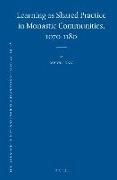- Start
- Das merowingische Gräberfeld Eppstein, Stadt Frankenthal [Pfalz]
Das merowingische Gräberfeld Eppstein, Stadt Frankenthal [Pfalz]
Angebote / Angebote:
Das seit dem 19. Jh. bekannte Reihengräberfeld wurde 1983-88 vollständig ergraben. Auf der Basis der 477 neuen und 41 alt gegrabener Gräber erfolgen chronologische Gliederung und kulturhistorische Einordnung der Funde. Der Beginn läßt sich ins 3. Drittel des 5. Jhs datieren [Koch Phase 2-3]. Da es sich um ein linksrheinisches Gräberfeld handelt, wurde provinzialrömischen Elementen größere Bedeutung beigemessen als germanischen Sachformen. Vor dem Hintergrund der Befunde der Villa von Wachenheim wird die These einer bikulturellen Mischbevölkerung vertreten. Innerhalb des germanischen Anteils finden sich alamannische und mitteldeutsche / südniedersächsische Gefäße. Die Eingliederung ins Frankenreich im frühen 6. Jh. [Ph. 4] spiegelt sich in Knickwandtöpfen / Knickwandtopf und verstärkter Beigabensitte nach rheinländischer Art, wobei auch thüringische Formen vorkommen. Kurz vor Mitte des 6. Jhs [Ph. 5/6] lassen sich nordseegermanische Neusiedler mit handgemachter Keramik nachweisen, wohl Zeugen gezielten fränkischen Landesausbaus. Ab der Mitte des 6. Jhs zeigen reiche Gräber im Norden eine wohlhabende Familie an. Die Belegung endet in der 1. Hälfte des 8. Jhs.
This row-gravefield has been known since the 19th century and was completely excavated from 1983-8. On the basis of 477 recently documented and 41 old graves, the chronological dating and cultural-historic classification are made. The cemetery began in the 3rd third of the 5th century [Koch phase 2-3]. Since the cemetery is situated left of the River Rhine, provincial Roman elements were paid greater attention than was Germanic material culture. Against the background of the villa rustica at Wachenheim, the hypothesis of a bicultural mixed population was favoured. Within the Germanic part there are vessels of Alamannic and Central German/Southern Lower Saxonian type. The incorporation into the Frankish Empire in the early 6th century [ph. 4] is reflected by carinated vessels and an increase in the number of grave goods in a way typical for the Rhineland, with Thuringian types also being present. Shortly before the mid 6th century [ph. 5/6] new settlers from the North Sea Germanic area are attested by their handmade pottery and probably witness to deliberate Frankish colonisation. After the mid 6th cent. rich graves in the north represented a wealthy family. The cemetery ended in the 1st half of the 8th century.
Libri-Titel folgt in ca. 2 Arbeitstagen
![Das merowingische Gräberfeld Eppstein, Stadt Frankenthal [Pfalz]](https://support.digitalhusky.com/media/annotations/sorted/169/16912113/CHSBZCOP0316912113.jpg)



